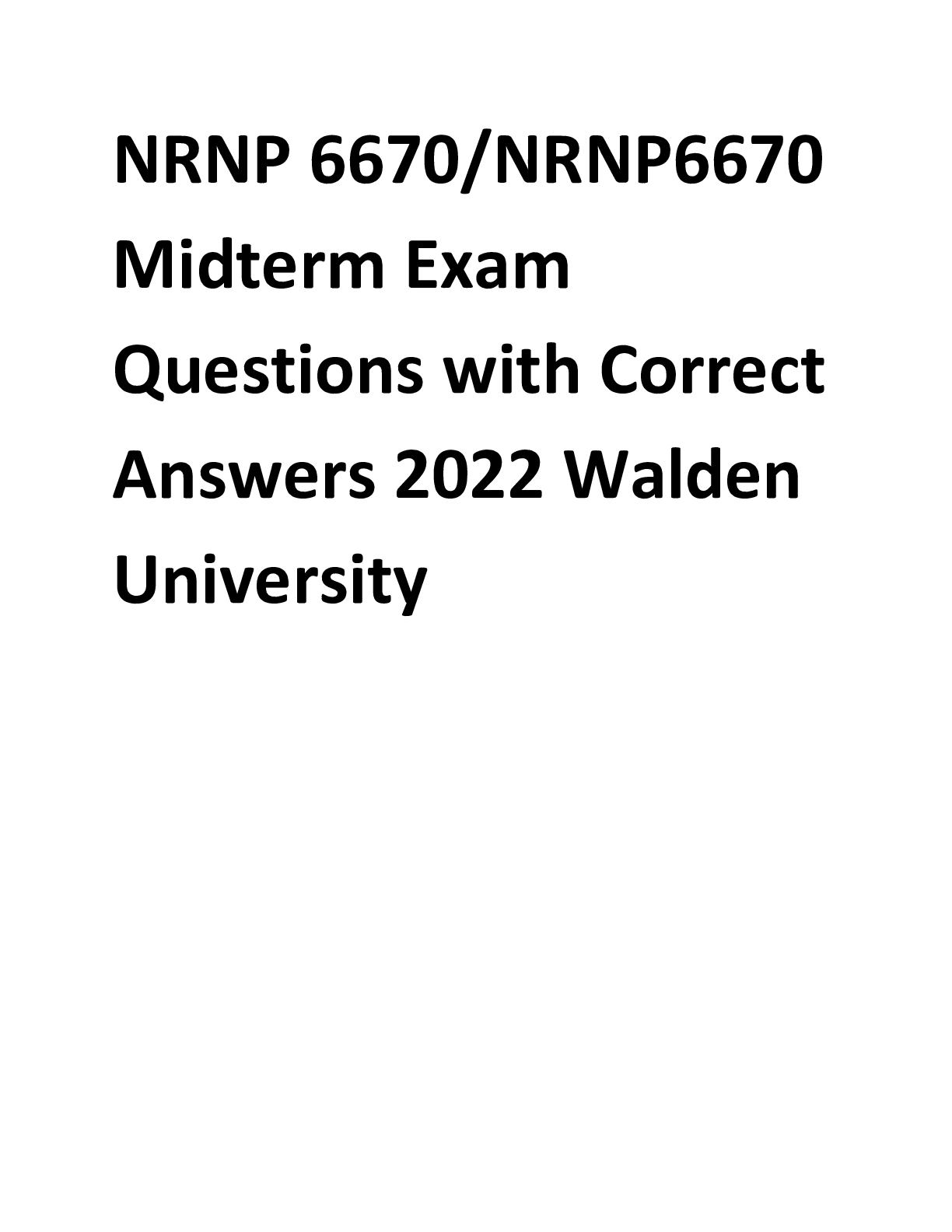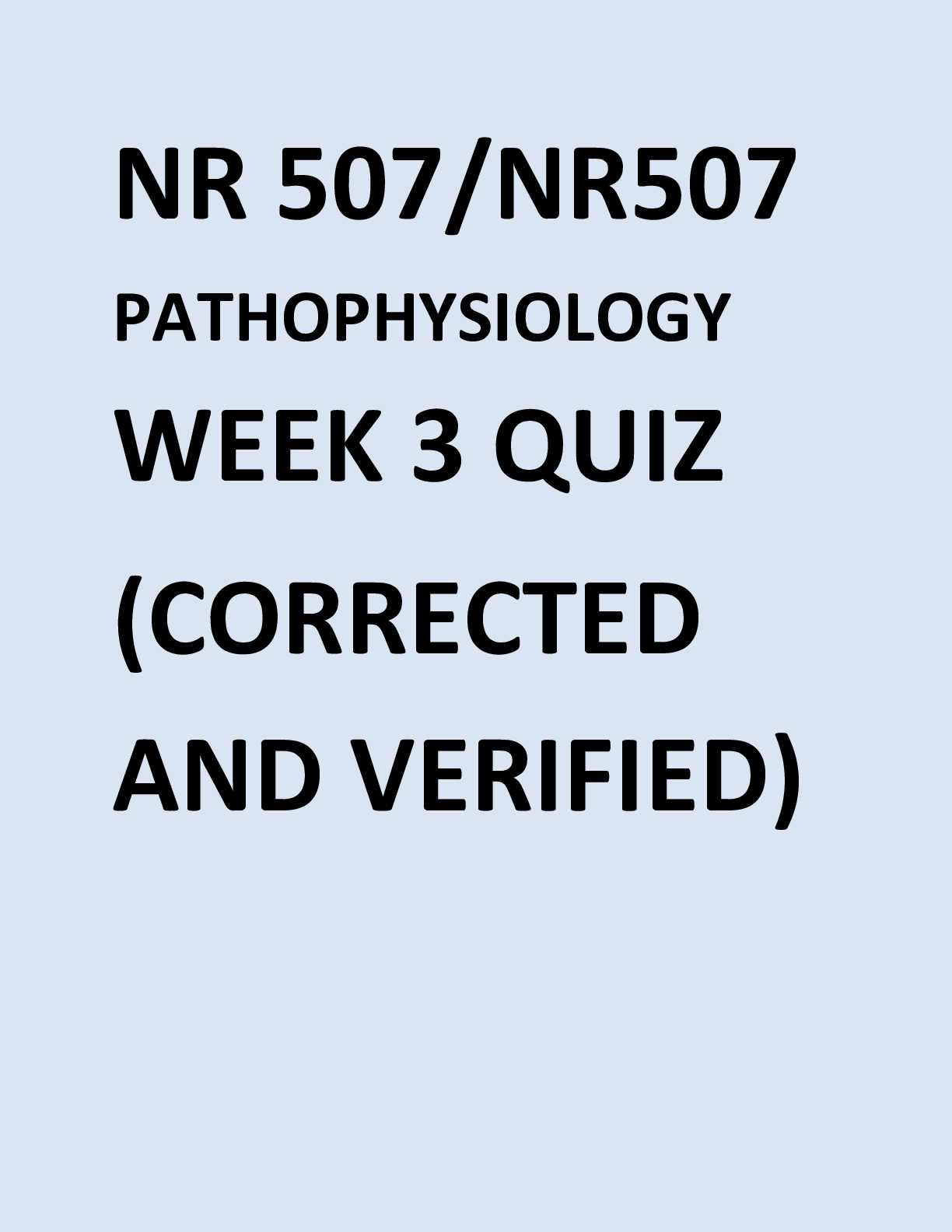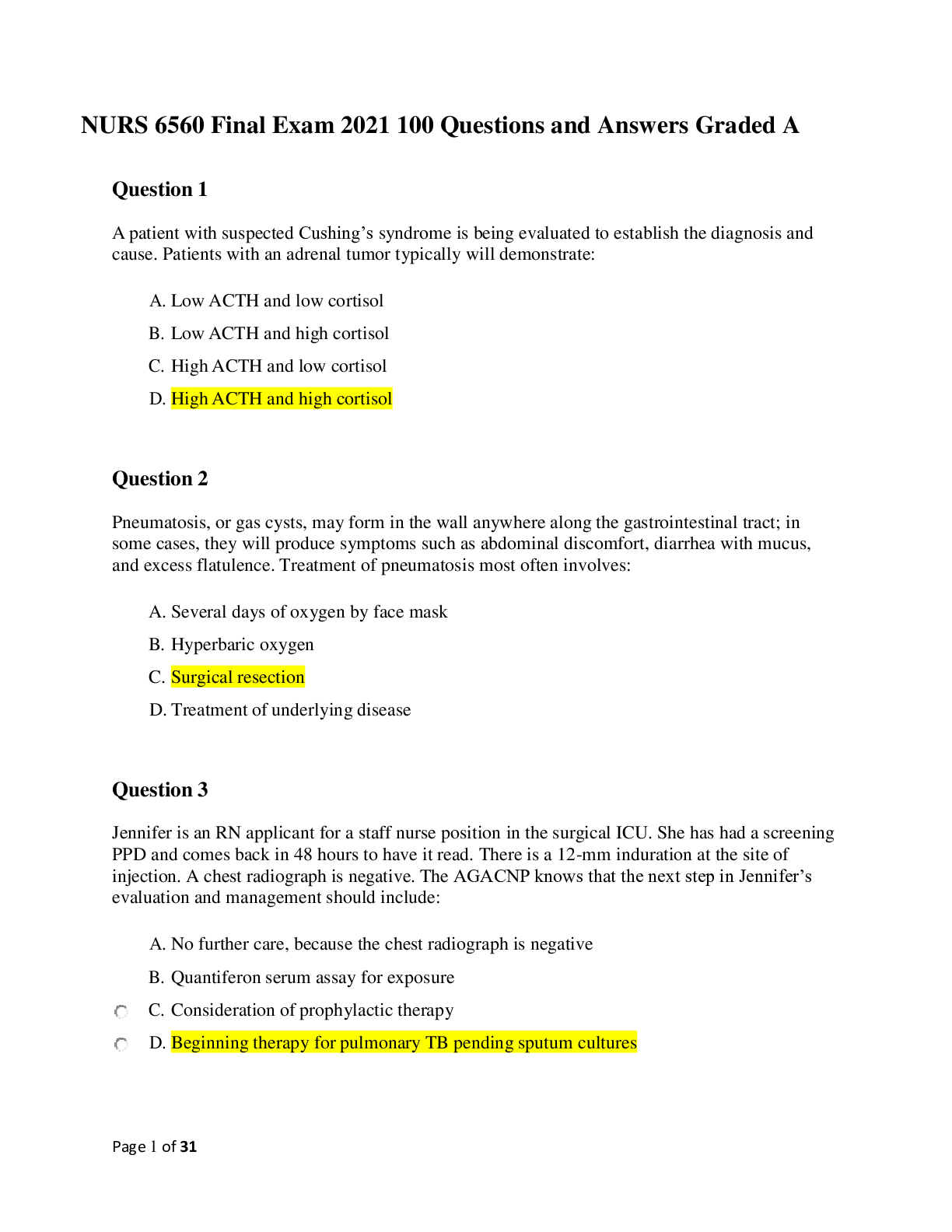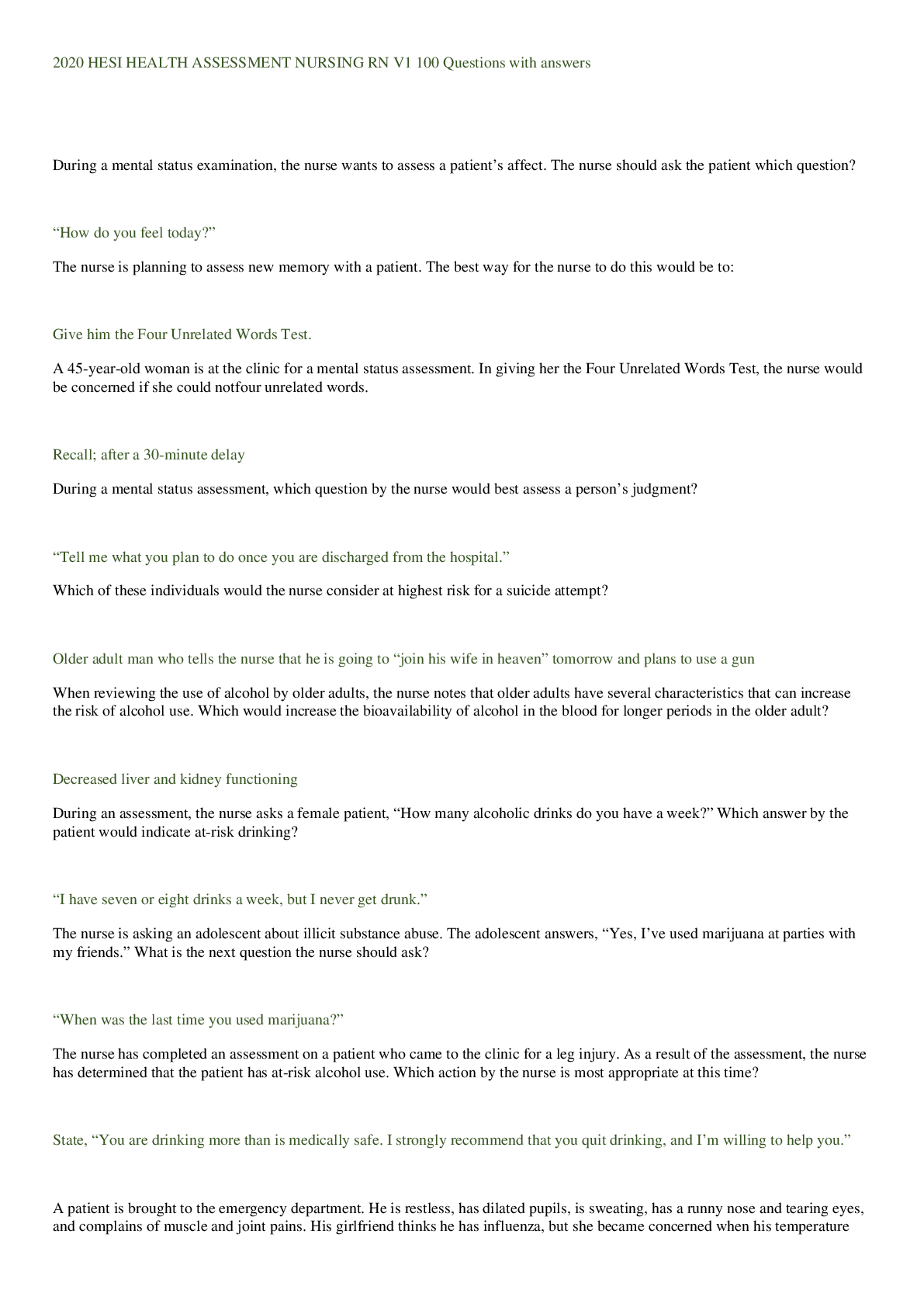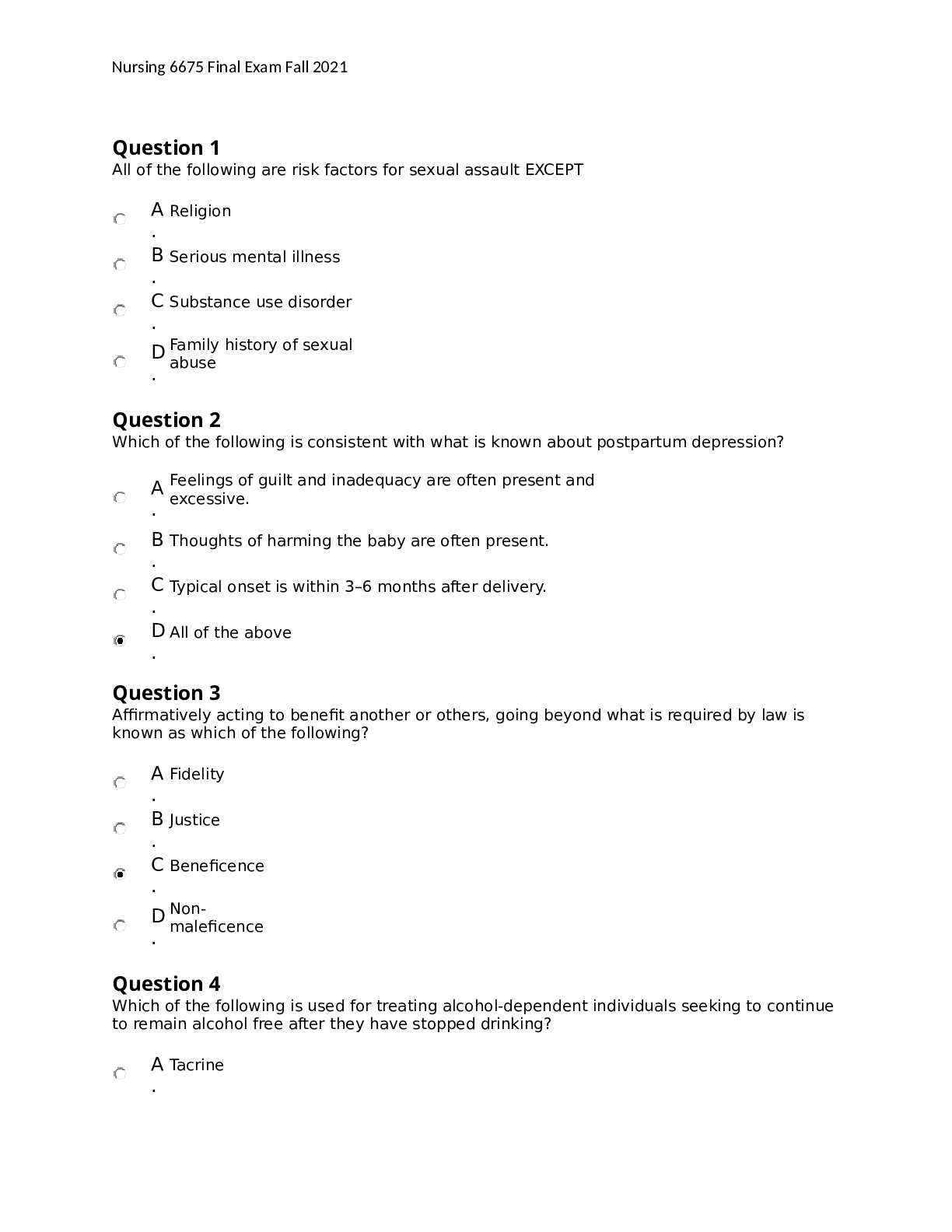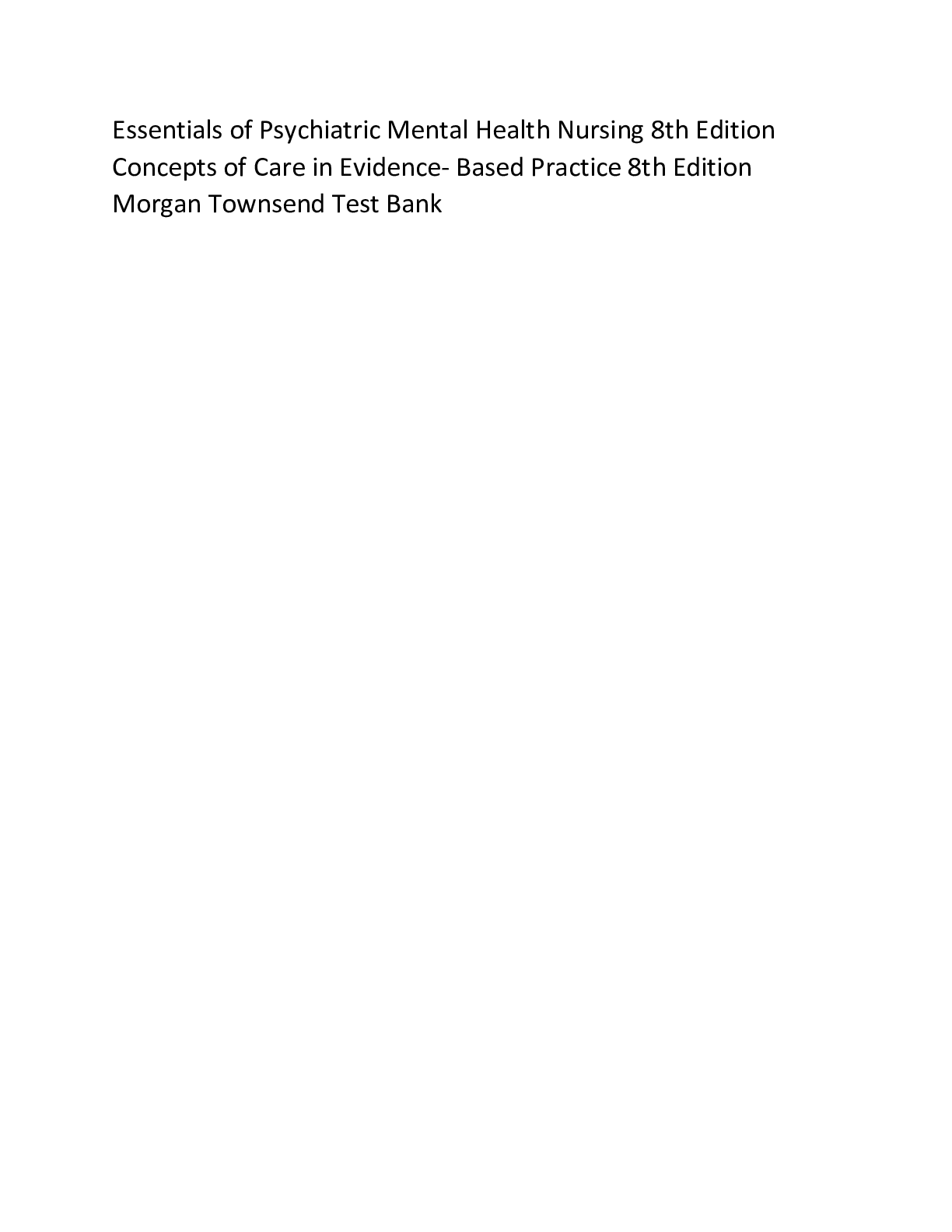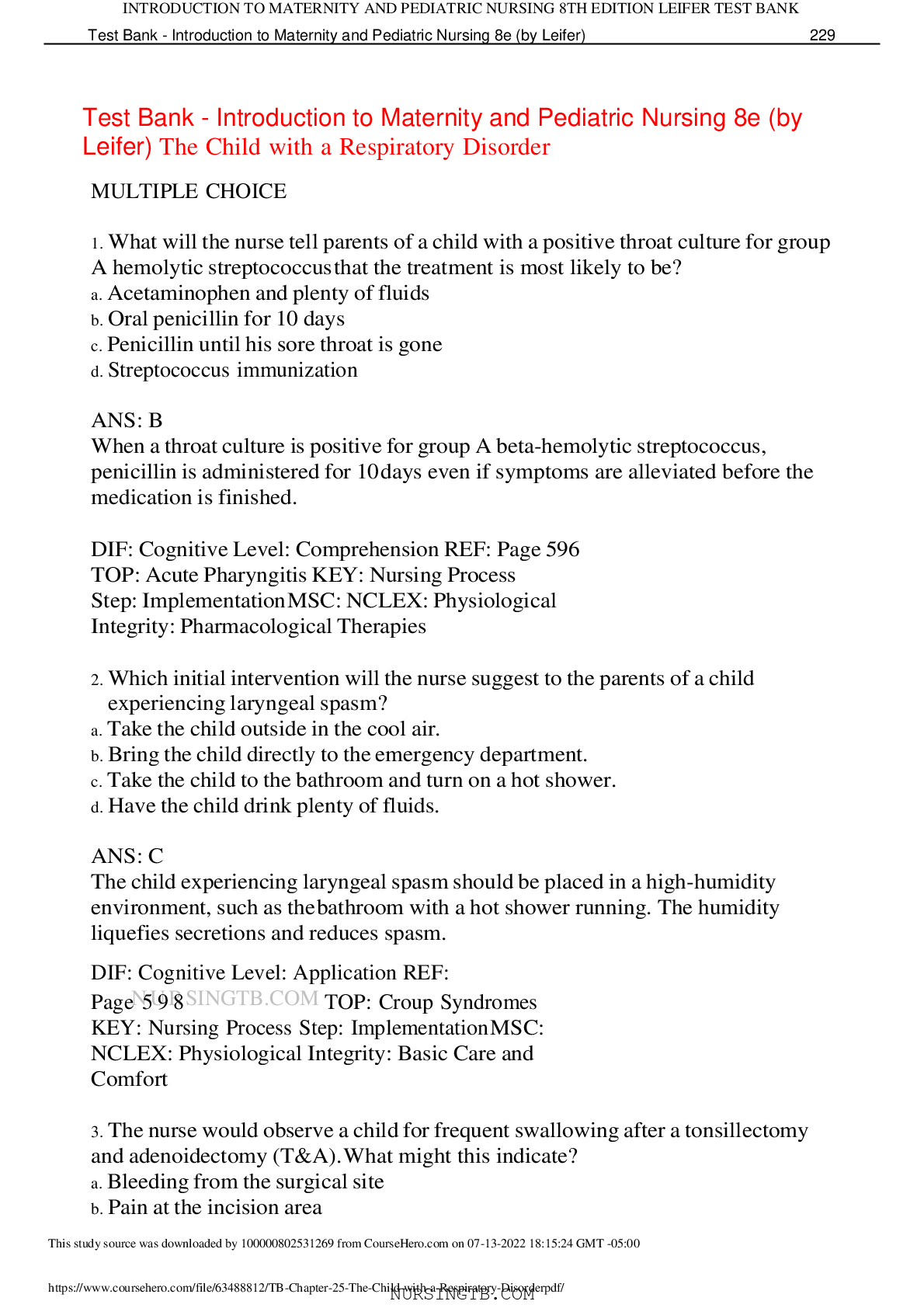Mental Health Nursing 8th Edition Exam 2021
Document Content and Description Below
textbook, if you have this exact textbook right now and want the questions and answers that come along with it, and then this test bank is for you. The format in which you will receive this nursing te... st bank is a Microsoft Word or PDF download. You can open this nursing test bank download on your phone or computer. Who is this test bank for? If you are a nursing student in school and you are taking a class or course in nursing school, this test bank is for you. You could be someone who needs help and wants to learn correct answers to hard questions, or maybe even someone who just wants to learn important knowledge for nursing: this test bank is perfect for you. Where to purchase test banks? You can purchase them here on this website: nursingtestbanks.org. These are practice study questions, which you can use for your exam. This is a digital download; you can download it right after your purchase today. Where to purchase the textbook instead of the test bank? You can download the eBook for the textbook, if you prefer a digital textbook instead of a hardcover. Is this a legit nursing test bank? Yes, the files listed here on nursingtestbanks.org are legit and authentic, we guarantee the authenticity of each chapter and test bank: this means that you will received every single authentic chapter, which includes all the questions and answers for each and every chapter. How to purchase this test bank? We have made very simple, easy and fast steps for you, to purchase and download this test bank today. You can add this test bank to your shopping cart, checkout and you receive your download link automatically. There is no waiting period; the download is instantaneous with your purchase because it is a digital file. When can I download this test bank? 2/10 You will be able to download this test bank today. We want to make the process easy for nursing students, so it doesn’t matter if it’s daytime or nighttime, when you checkout, you will be provided with a download link right away so you can start studying. Free nursing test banks sample: Chapter 27- Cognitive Disorders 1. A client with Alzheimer’s disease in the intensive treatment unit repeatedly tries to go into other patients’ rooms to nap during the day. The most appropriate nursing intervention for this patient is what? A) Allowing her to nap in an empty room B) Explaining to her why this cannot be tolerated C) Escorting the patient to her room for napping D) Suggesting that daytime napping be decreased Ans: C Feedback: Allowing the client to nap in an empty room would disrupt unit activity because of frequent bed changes and does not serve any therapeutic purpose. Explaining to the client why this behavior cannot be tolerated would be ineffective, because the client has memory impairment and would not remember not to go into the rooms of others. Escorting the client to her room for napping allows the client her own space and reinforces the reality of her personal room. Unless daytime napping interferes with nighttime sleep, there is no reason to eliminate short napping periods. 2. A client has experienced a gradual flattening of affect, confusion, and withdrawal and has been diagnosed with Alzheimer’s disease. The nurse assesses which of the following additional characteristics of this disorder? A) Personality change, wandering, and inability to perform purposeful movements B) Delusions, hallucinations, and confusion about date and time C) Tremors, unsteady gait, and transient paresthesias D) Transient blindness, slurred speech, and weakness Ans: A Feedback: Alzheimer’s disease is not typically characterized by delusions, transient paresthesias, blindness, or slurred speech. Instead, general changes in personality, wandering, and the inability to perform purposeful, goal-directed movements are impaired. 3. Heindel and Salloway (1999) identified four distinct, yet mutually interacting, memory systems as being affected in dementia. Which of the following is not one of them? A) Working memory B) Episodic memory 3/10 C) Semantic memory D) Short-term memory Ans: D Feedback: Heindel and Salloway (1999) have found that memory is not a single homogenous entity. Rather, it is composed of four distinct, yet mutually interacting, memory systems: working memory, episodic memory, semantic memory, and procedural memory. Short-term memory refers to the length of time during which material is remembered, not to a distinct type of memory system. 4. A client was admitted to the ICU after a motor vehicle accident. She sustained a right parietal injury, resulting in an acute confusional state or delirium. She complains that there are “bugs crawling around” on her arms. The nurse understands what? A) Such hallucinations suggest preexisting schizophrenia. B) Transient tactile hallucinations are sometimes seen in delirium. C) Such symptoms indicate increasing brain damage and poor prognosis. D) The client is more prone to such episodes early in the morning. Ans: B Feedback: With delirium, as is the case with the client, transient tactile hallucinations are seen in many cases. This type of tactile hallucination would not indicate schizophrenia or brain damage, nor would the client be any more prone to them at any time of the day. 5. The nurse is working with the family of a client who is newly diagnosed with Alzheimer’s type dementia. Which of the following suggestions would be effective for assisting the family in daily orienting of their family member when the client returns home? A) Provide a flexible schedule and change the activities each day. B) Use daily newspapers, calendars, and a set routine. C) Read to the client for long periods at a time. D) Use a daily current events quiz, making sure that the client participates. Ans: B Feedback: Using daily newspapers, calendars, and a set, unchanging routine would be a more effective way to provide daily orientation for the family member. Changing daily activities would make it more difficult to maintain orientation. Reading to the client for long periods of time would not maintain client involvement and appropriate stimulation. Using daily quizzes would place stressful demands on the client and not provide functionally appropriate tasks. 6. A client was admitted with multi-infarct dementia. Nursing assessment and interview of the client would include what? A) Electroencephalogram, X-rays, blood chemistries, and skull series 4/10 B) Intellectual ability, health history, and self-care ability C) Early parent–child conflict and relational patterns D) Assessment of deep tendon reflexes and muscle strength Ans: B Feedback: A comprehensive nursing assessment should include obtaining the premorbid intellectual ability, health history, and self-care abilities of the client. The medical assessments, which are important, are not as critical to nursing assessment as the actions in the correct answer. Exploring early parent–child conflict and relational patterns would not be helpful with dementive process. 7. Which of the following neuroimaging diagnostic evaluations is highly predictive of dementia of Alzheimer’s type? A) Neurohistologic lesion in basal ganglia B) Small infarctions in the white matter of brain C) Bilateral temporal and parietal perfusion defects D) Infarction of small- and medium-sized cerebral vessels Ans: C Feedback: The predominate finding of bilateral posterior temporal and parietal perfusion defects is thought to be highly predictive of DAT. Parkinson’s disease is due to the presence of neurohistologic lesions in the basal ganglia. Binswanger’s disease is a type of vascular dementia that is characterized by the presence of many small infarctions affecting the white matter of the brain. Vascular dementia is thought to result from infraction of small- and medium-sized vessels causing parenchymal lesions to occur over wide areas of the brain. 8. A client with dementia is sleeping throughout the day at the nursing home. The client is most likely exhibiting which of the following? A) Agnosia B) Sundown syndrome C) Confabulation D) Preservation Ans: B Feedback: Sundown syndrome may be caused by a misinterpretation of the environment, lower tolerance for stress at the end of the day, or overstimulation due to increased environmental activity later in the day. Clients may exhibit altered sleep patterns, such as sleeping throughout the day. Agnosia is the failure to recognize or identify objects despite intact sensory function. Confabulation is the filling in of memory gaps with false but sometimes plausible content to conceal the memory deficit. Preservation is the inappropriate continuation or repetition of a behavior. 5/10 [Show More]
Last updated: 1 year ago
Preview 1 out of 10 pages
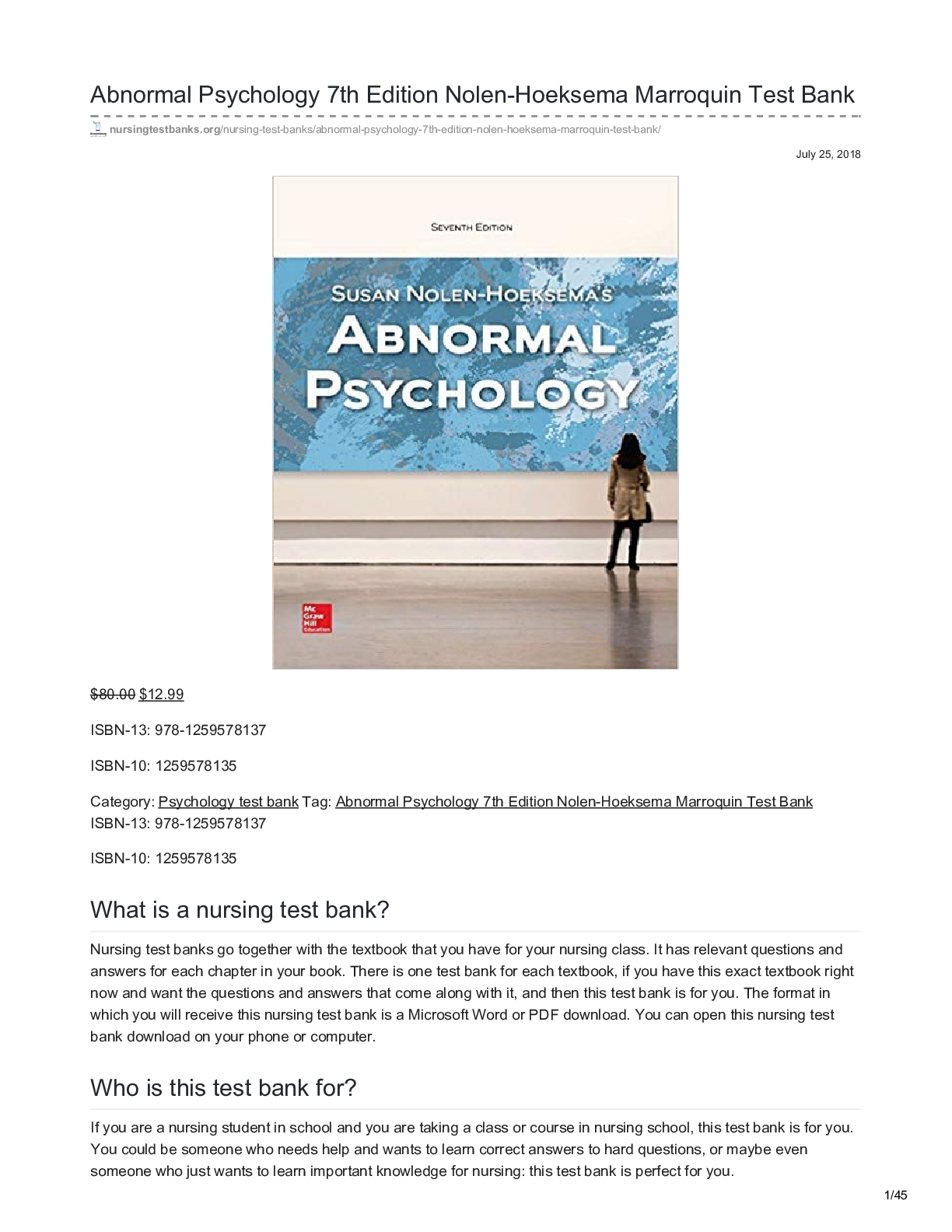
Buy this document to get the full access instantly
Instant Download Access after purchase
Add to cartInstant download
We Accept:

Reviews( 0 )
$11.50
Document information
Connected school, study & course
About the document
Uploaded On
Aug 31, 2021
Number of pages
10
Written in
Additional information
This document has been written for:
Uploaded
Aug 31, 2021
Downloads
0
Views
55


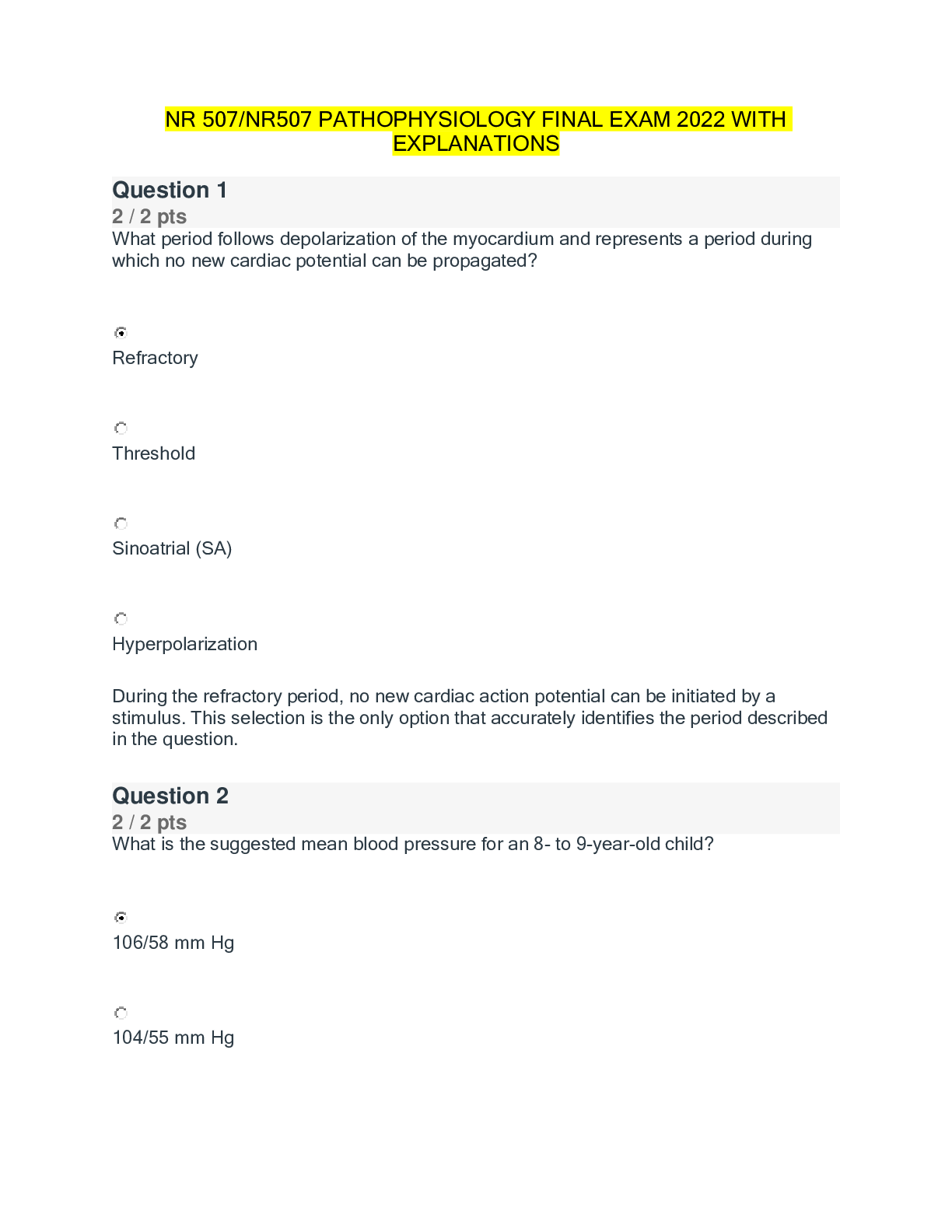
.png)
